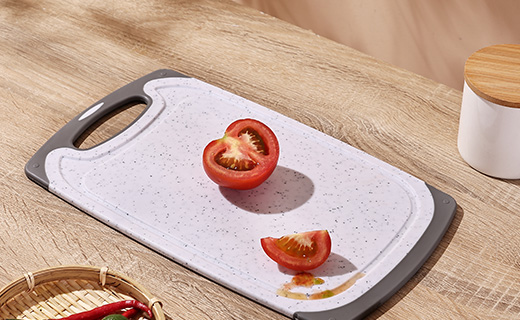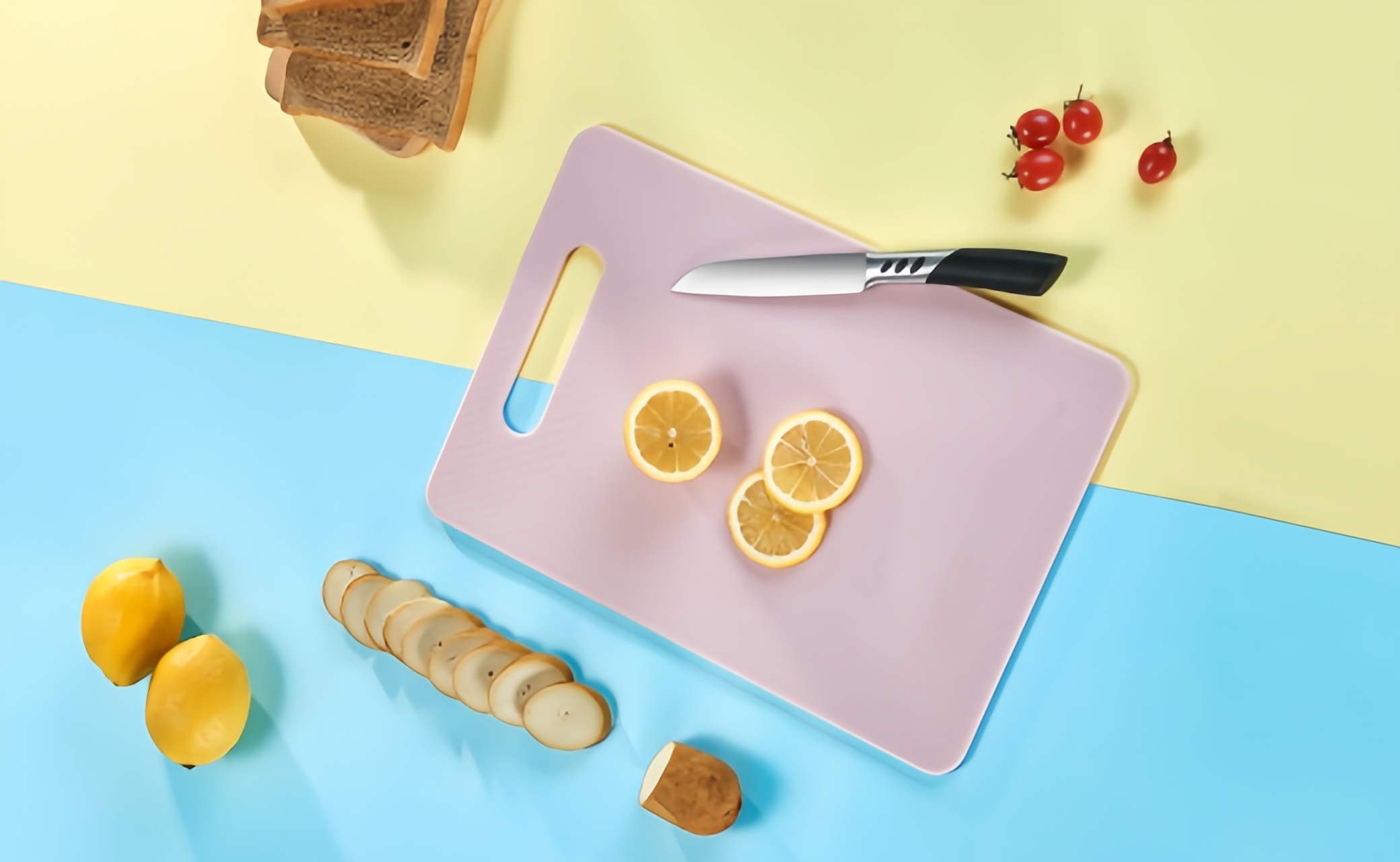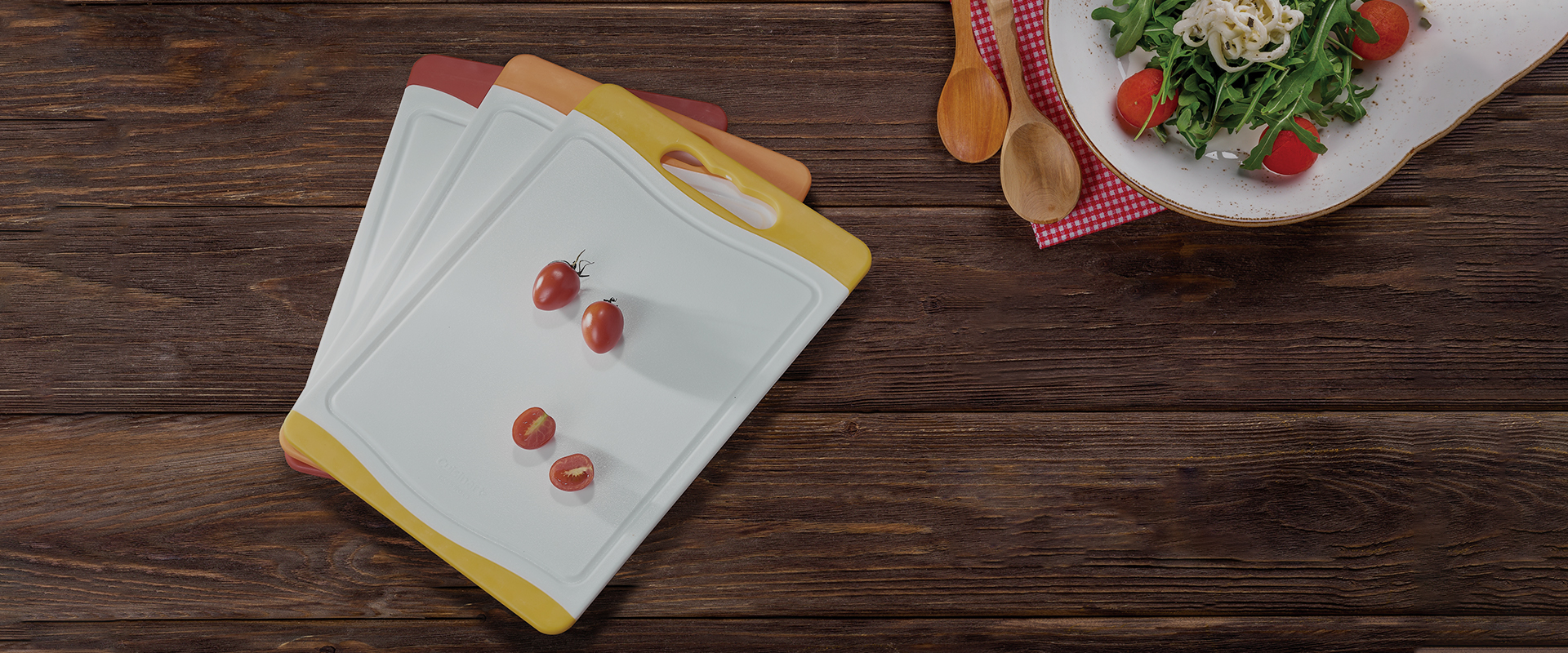industrial strength third party inspected food prep surface
 A fundamental prep board serves as an essential implement in any kitchen. It delivers a firm and safe platform for ingredient prep, and the perfect board boosts your kitchen performance. With countless varieties present, choosing a starting option may be stressful. Don't worry! This guide will walk you through the key factors to keep in mind when selecting the perfect chopping board for your needs.
A fundamental prep board serves as an essential implement in any kitchen. It delivers a firm and safe platform for ingredient prep, and the perfect board boosts your kitchen performance. With countless varieties present, choosing a starting option may be stressful. Don't worry! This guide will walk you through the key factors to keep in mind when selecting the perfect chopping board for your needs. Initially, assess the material types available. Common choices include wood, bamboo, plastic, and glass. Every choice entails particular merits and demerits. Wood boards last long and resist bacteria naturally yet need consistent oiling. Bamboo represents a sustainable, strong, and lightweight material. Plastic cutting panels are economical and easy to maintain but may reduce knife sharpness quicker. Glass boards remain scratch-proof and cleanable in dishwashers but may be heavy and brittle.
Next, evaluate the dimensions required. A tiny board works well for simple tasks like chopping herbs and garlic, but a larger surface supplies more area for slicing veggies or prepping dinner. Take into consideration the space on your countertop.

Finally, don't forget about design. A chic chopping board infuses personality into your culinary area. Opt for a board that aligns with your decor and personal aesthetic.
Polymer vs Timber vs Silicone: Cutting Board Comparison
Selecting a cutting board sparks a long-running argument among plastic, wood, and bamboo advocates. Each substance offers unique benefits, making the selection challenging for home chefs. Plastic cutting slabs stand out for toughness and easy maintenance; wood boards bring a natural aesthetic and allow sanding and refinishing. Ultimately, the best choice depends on your cooking habits.
Reflect on frequency of use, the kinds of cutting jobs, and your own preferences when selecting.
- Plastic prep boards commonly provide lower weight and cost than wood boards
- Wooden cutting slabs usually have appealing appearance and longer lifespan with upkeep
- Silicone cutting mats offer flexibility and resist stains though they might lack the durability of polymer or timber
Best 5 Boards for Cooking Champions
If you’re a cooking expert, you recognize the importance of a quality board. It’s the central work surface for chopping produce and slicing proteins. However, given many choices, picking the right board may be hard. Rest assured, food fans — we compiled five top cutting boards to improve your kitchen prowess.
- Leading our picks is...
- Subsequent pick is...
- Also on the list is...
- Give thought to is...
- Completing our list is...
Keeping Your Cutting Board Clean: A Guide
A cutting surface is essential but must be maintained to assure safety and durable life. Frequent washing helps limit harmful bacterial spread.
Use these basic recommendations to maintain your cutting board well:
- Cleanse the board using hot, soapy water following each use.
- Disinfect the board with a mild bleach mix or a food-safe disinfectant.
- Allow the cutting board to dry completely before putting it away.
- Place the board in a ventilated spot to prevent dampness.

Sharpening Techniques for Knives on Cutting Boards
Obtaining a razor-sharp edge on a cutting board calls for careful, systematic strokes over random swipes. It’s a systematic combination of force control and angle consistency. Start with aligning the sharpening tool at a regular degree against the knife edge. Next, draw the tool along the knife’s edge, keeping that even angle. Remember to use steady technique, not raw power, with smooth controlled strokes. As you work the edge, you’ll notice the blade’s surface smooth out and catch less often. Feel free to try different angles and pressures until you discover the best approach for your knife and sharpener. Once you reach that sharpness, slicing becomes effortless and elevates your culinary experience.
Building Boards for Culinary Artisanship
best cutting boardThis month features Artisan Block Co., a respected company focused on producing premium cutting boards. With decades of practice, they refine raw wood into practical and attractive kitchen pieces. Their dedication to excellence appears in selecting sustainably sourced wood and applying time-honored construction methods.
Every board is uniquely crafted to display the inherent beauty of the wood grain. They supply a broad selection of styles and dimensions to accommodate everyone, from compact daily boards to large chef-grade butcher blocks.
- Furthermore, Artisan Block Co. offers a range of accessories to enhance your culinary experience, including stylish knife blocks and cutting board oils to help maintain the durability of your investment.
- Whether you are seeking a high-quality cutting board that will become a cherished part of your kitchen, look no further than Artisan Block Co..
Robust & Stylish: Today's Cutting Board Innovations
Enhance aesthetic appeal and function via modern board designs. Plain heavy boards are passé; modern boards employ inventive materials and designs to suit any kitchen. Using tough hardwoods like walnut and maple, modern boards resist daily wear and lend sophistication to countertops. From classic rectangular models to cutting-edge geometric designs, options exist for every aesthetic.
- Select from multiple surface finishes that harmonize with your decor.
- Consider boards with built-in juice grooves for easy cleanup.
- Get a durable board designed for years of reliable service.
Sustainable Board Selections for Eco-Minded Cooks
When deciding on a cutting surface, think about its environmental impact. Eco-conscious boards come from bamboo, responsible forest wood, or recycled plastic materials. These options decrease your ecological impact and promote planetary well-being.
- Opt for bamboo, a rapidly renewable and resilient material.
- Select wood from sustainably managed forests.
- Explore boards crafted from recycled plastic to repurpose waste materials.

Avoid Marks: Material Guide for Cutting Boards
Choosing the right material is essential for a cutting surface. A tough, stain-deflecting surface makes kitchen work easier. Wood surfaces feel traditional but may soak up odors and stains. Bamboo strikes a good balance, offering strength and inherent antimicrobial traits. Plastic surfaces cost less but can be easily marred by cuts. Glass cutting slabs are attractive but can crack or break. Pick a board that fits your cooking routine and design tastes.
Preventing Board Injuries: Safety Guidelines
Keeping your board in good repair is vital for safe food handling. Make it a rule to sanitize boards before and after each usage. Keep distinct boards for raw meats, poultry, and seafood to minimize cross-contamination. Refrain from slicing on the board’s rim to prevent damage that fosters bacterial growth. When deep gouges or cracks occur, it’s time to replace the board.
- Always cut on a steady prep surface.
- Keep knives well-sharpened to prevent slips.
- Wash hands completely with soap and water following raw food handling.
Improve Kitchen Performance with a Quality Board
An upscale board represents more than just a surface for chopping vegetables. It’s a purchase that can upgrade your culinary routine. Constructed from robust and attractive hardwoods or bamboo, these boards offer longevity. Their even surfaces supply a steady platform for precision cutting and their designs enhance kitchen decor.
- A premium board helps sharpen the precision of your knife handling.
- Prevent countertop scratches and damage.
- Showcase cooking skill with a beautiful functional cutting board.
